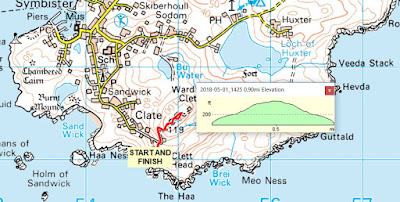| Whalsay is off the east coast of Mainland Shetland and is roughly 5 x 2 miles. Its main industries are fishing and crofting and its population is just over a thousand people. For hundreds of years the local salt fish trade was in the hands of German merchants of the Hanseatic League. Ships from Hamburg, Bremen and Lubeck sailed to Shetland, particularly Symbister in Whalsay, every summer, bringing seeds, cloth, iron tools, salt, spirits, luxury goods and hard currency. Generations of the same families made the voyage and some merchants are buried in the islands. But it all came to an end when the Germans were forced out by import duties after the 1707 Treaty of Union between England and Scotland. Problems with Europe and import duties, eh? Doesn't that have a modern echo! |

















No comments:
Post a Comment